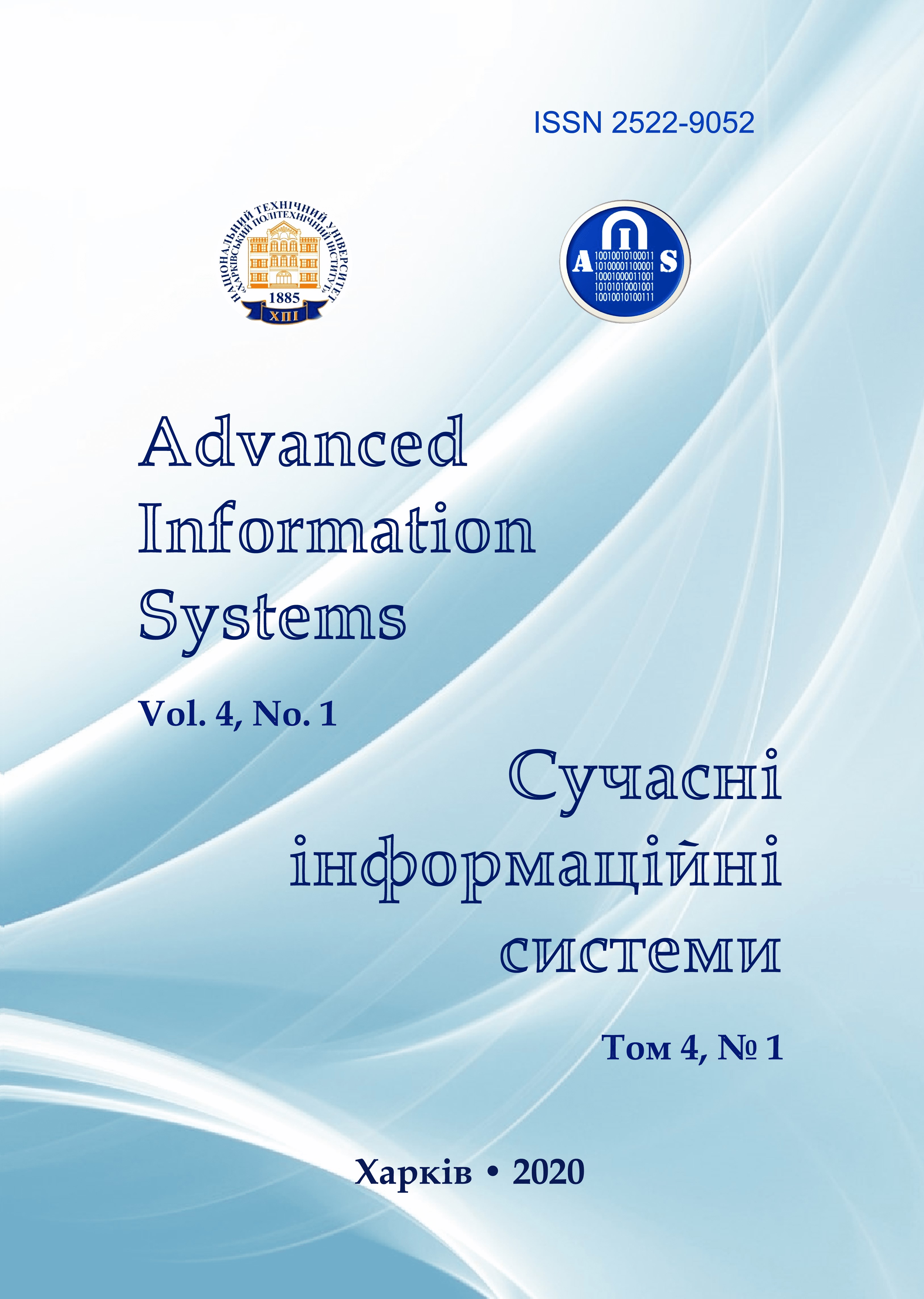INFORMATION ANALYSIS METHOD ABOUT CURRENT SITUATIONS IN ACS OF SPECIAL OPERATIONS
Main Article Content
Abstract
The relevance of improvement and difficulty of establishing ERP systems and methods of their development is considered. The features of the development of special mathematical and software implements strategy ERP system shows effective ways formalized description of the classes of recognizable situations in the form of membership functions corresponding regions of the feature space. In the course of developing automated ERP systems, it is necessary to apply direct methods for characterization of classes of recognizable situations. As shown by the analysis of typical SR tasks solved in ERP systems, in practice a feature space can contain many hundreds and even thousands of attributes. In this case, the number of examples of situations belonging to a particular class, as a rule, is limited to tens of units. Therefore, for classical learning algorithms, the required length of a training sequence for SR tasks of practical importance, as a rule, many times exceeds the disposable number of examples of environment. The source of information necessary for the construction of such a priori descriptions can be experts who can solve SR tasks in a non-automated way in conditions of psychological comfort.
Article Details
References
Kaipei, Yang, Yaakov, Bar-Shalom and Peter Willett (2019), “The cross-covariance for heterogeneous track-to-track fusion”, Willett Proc., Vol. 11018, Signal Processing, Sensor/Information Fusion, and Target Recognition XXVIII; 1101806 (2019) https://doi.org/10.1117/12.2520001
Gorelik, A.L. and Skripkin, V.A. (1989), Recognition methods, Vyssh. shkola, Moscow, 232 p.
Svyrydov, A., Kuchuk, H., Tsiapa, O. (2018), “Improving efficienty of image recognition process: Approach and case study”, Proceedings of 2018 IEEE 9th International Conference on Dependable Systems, Services and Technologies, DESSERT 2018, pp. 593-597, DOI: http://dx.doi.org/10.1109/DESSERT.2018.8409201
Donets, V., Kuchuk, N. and Shmatkov, S. (2018), “Development of software of e-learning information system synthesis modeling process”, Advanced Information Systems, Vol. 2, No 2, pp. 117–121, DOI: https://doi.org/10.20998/2522-9052.2018.2.20.
Mozhaev, O., Kuchuk H., Kuchuk, N., Mozhaev, M. and Lohvynenko M. (2017), “Multiservise network security metric”, IEEE Advanced information and communication technologies-2017, Proc. of the 2th Int. Conf, Lviv, pp. 133-136, DOI: https://doi.org/10.1109/AIACT.2017.8020083
Vapnik, V.N. and Chervonenkis, A.Ya. (1974), Pattern recognition theory, Nauka, Moscow, 416 р Moscow.
Khudov, V.G., Kuchuk, G.A., Makoveychuk, O.M. and Krizhny A.V. (2016), “Analysis of known image segmentation methods obtained from on-board optoelectronic surveillance systems”, Information Processing Systems, No. 9 (146), pp. 77-80.
Shylo, S., Golovnyak, D., Khmelevskiy, S. and Timochko О. (2019), “Method of joint processing of coordinate and signal information in systems of radio location information of special purpose”, Control, navigation and communication systems, PNТU, Poltava, Vol. 6 (58), pp. 123-128, DOI: https://doi.org/10.26906/SUNZ.2019.6.123.
Grib, D.A., Demidov, B.O., Khmelevskyi, S.I. and Matiushchenko, O.H. (2019), “Intellectual technologies in the problems of structure management of dynamics of complex multiple structural military systems”, Information Processing Systems, Vol. 3(158), pp. 15-26, DOI: https://doi.org/10.30748/soi.2019.158.02
Pavlenko, M.A., Smeliakov, S.V., Rudenko, V.N. and Khmelevskyi, S.Y. (2016), “Areas of interface interaction in automated control systems special”, Information Processing Systems, Vol. 9 (146), pp. 51-54.
Dmitriiev, O.M., Melnychuk, M.H., Khmelevskyi, C.I., Shcherbak, H.V. and Shylo, S.H. (2019), “Method of psycho-diagnostic tools' determination for professional selection and training of specialists in complex ergatic systems”, Scientific Works of Kharkiv National Air Force University, Vol. 3(61), pp. 53-62, DOI: https://doi.org/10.30748/zhups.2019.61.08
Herasymov, S.V., Tymochko, O.I. and Khmelevskyi, S.I. (2017), “Synthesis method of the optimum structure of the procedure for the control of the technical status of complex systems and complexes”, Scientific Works of Kharkiv National Air Force University, Vol. 4(53), pp. 148-152.
